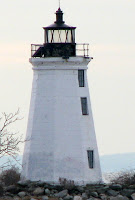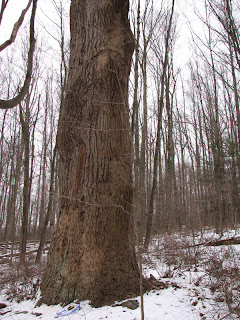skip to main |
skip to sidebar
 Monroe did a really nice job at their new "Webb Mountain Discovery Zone", located on 171 acres of new open space next to Webb Mtn Park, just over the Shelton border. There are lots of interpretive signs, benches, landscaping, security cameras, and wide easy trails. There were maps and scavenger hunt cards at the entryway when I visited today (see photos).
Monroe did a really nice job at their new "Webb Mountain Discovery Zone", located on 171 acres of new open space next to Webb Mtn Park, just over the Shelton border. There are lots of interpretive signs, benches, landscaping, security cameras, and wide easy trails. There were maps and scavenger hunt cards at the entryway when I visited today (see photos).
From Shelton, take East Village Road and just after you cross into Monroe, take a right at Webb Circle. The very large parking area and sign are on the left maybe half a mile up the road. Can't miss it.
Funding for the $35,000 "outdoor classroom" came largely from private businesses. Wouldn't it be nice to see some contributions like that from our own businesses here in Shelton?
 These fruits of the Osage Orange Tree are nicknamed "Monkey Brains". I found them under a grove of trees near Black Rock Lighthouse in Bridgeport while geocaching.
These fruits of the Osage Orange Tree are nicknamed "Monkey Brains". I found them under a grove of trees near Black Rock Lighthouse in Bridgeport while geocaching.
I had never run across this bizarre tree before, so I looked it up on Wikipedia and discovered more interesting tidbits about it. Although the fruit are not very toxic, they tend to make you vomit. An oil of the fruit shows promise as a mosquito repellent.
 Also, there are no animal that eat the fruit, so what's the point? Fruit is normally designed to be eaten for seed dispersal. According to one theory, giant ground sloths used to eat it, but went extinct when people came to North America.
Also, there are no animal that eat the fruit, so what's the point? Fruit is normally designed to be eaten for seed dispersal. According to one theory, giant ground sloths used to eat it, but went extinct when people came to North America.
The tree is native to the Arkansas, Oklahoma and Texas and is also called Osage Apple, Wild Orange, Mock Orange and Bodark. The fruit has other nicknames besides Monkey Brains, including Monkey Ball, Monkey Fruit, and Brain Ball. So there you go, learning something every day.
By the way, the lighthouse and Seaside park are very picturesque and easy to get to in the middle of the winter. No crowds. The lighthouse was once on a island, but that's been connected to the mainland by a huge causeway of boulders you can walk on. From the parking lot, it's about a 15 minute walk.
 The photo is of the Indian Well Road bridge over Indian Hole Brook (which happened to be very dry at the time of the photo). If you've ever visited "the Well" at Indian Well, or driven along Indian Well Road between Route 110 and the state beach, you've probably noticed all the stone work along the road.
The photo is of the Indian Well Road bridge over Indian Hole Brook (which happened to be very dry at the time of the photo). If you've ever visited "the Well" at Indian Well, or driven along Indian Well Road between Route 110 and the state beach, you've probably noticed all the stone work along the road.
According to a Robert Novak article that appeared in the Huntington Herald on May 21, 1997, the stone work was completed during the Great Depression under the Works Progress Administration (WPA). According to Wikipedia, WPA projects included the construction of 650,000 miles of roads, 78,000 bridges, 125,000 buildings, and 700 miles of airport runways, as well as other projects.
The Post Office in downtown Shelton has another WPA product on display: A panoramic painting of the Derby-Shelton Dam from Riverview Park. Check out the symbolism next time you are standing in line. The factories below the dam are belting out smoke, which was considered a good thing in those days because that meant people were employed. Note also the name of the park on the piece of paper the woman is holding. It says, "Indian Park," which must have been the original name of Riverview Park.
According to the Novak article, while the WPA stone work was being constructed along the road, a CCC crew was in the woods creating the Paugussett "Blue Dot" Trail. The Civilian Conservation Corp (CCC) was another depression-era work program.
 There is a register of Really Big Connecticut Trees, which are actually called "Notable Trees" by the Connecticut Botanical Society. I've known that one of the registered trees was right here in Shelton at the French's Hill Open Space off of East Village Road, a Tulip Tree, but I hadn't been able to locate it until today, when I found the registration form while filing some old papers. According to the form, the circumferance is 14 feet 11 inches and is 123 feet tall.
There is a register of Really Big Connecticut Trees, which are actually called "Notable Trees" by the Connecticut Botanical Society. I've known that one of the registered trees was right here in Shelton at the French's Hill Open Space off of East Village Road, a Tulip Tree, but I hadn't been able to locate it until today, when I found the registration form while filing some old papers. According to the form, the circumferance is 14 feet 11 inches and is 123 feet tall.
I found the tree a few hundred feet off the end of Sagamore Road. To be honest, although it's a really big tree, I thought it would be larger. I've seen trees this big, althought they were always Oaks or Maples, and I have to admit I've never seen a Tulip Tree this big. The diameter was about 4 feet. It's a classic "Wolf" tree, one that grew all by itself in an open field, with a wide, spreading canopy, only to have a young forest grow up around it as the field was abandoned. I rarely see Tulip Trees with spreading crowns. Usually they are a tall, straight telephone pole with a narrow crown so high you can barely see it. (ID tip: Any unnaturally straight tree in the forest is probably a Tulip).
Back home, I Googled "big trees, Connecticut" (I kid you not) and came with the Notable Tree website. They've got the list of registered notable trees online, and I was surprised to find that there are five registered trees in Shelton: A purple European Beech (21 ft circumferance); a White Oak (I bet it's the one at the corner of East Village Road and Longfellow, 19 ft cir.); a Norway Spruce (could this be the one that took a trip to Rockefeller Center? 10 ft cir.); and a Sycamore (15 ft circ.). They won't tell you exactly where the trees are, because many are on private property.
None of the Shelton trees are the largest in the state. The Tulip Tree, when it was registered, was the 12th largest in the state. But that's nothing. Down south in the Appalachian cove forests, tulip trees can have a circumference of 20 to 30 feet (our is almost 16 ft). And they are one of the tallest trees in the forest.
Coordinates for the tree are N 41 20.649', W 73 08.237'
 Monroe did a really nice job at their new "Webb Mountain Discovery Zone", located on 171 acres of new open space next to Webb Mtn Park, just over the Shelton border. There are lots of interpretive signs, benches, landscaping, security cameras, and wide easy trails. There were maps and scavenger hunt cards at the entryway when I visited today (see photos).
Monroe did a really nice job at their new "Webb Mountain Discovery Zone", located on 171 acres of new open space next to Webb Mtn Park, just over the Shelton border. There are lots of interpretive signs, benches, landscaping, security cameras, and wide easy trails. There were maps and scavenger hunt cards at the entryway when I visited today (see photos). 





